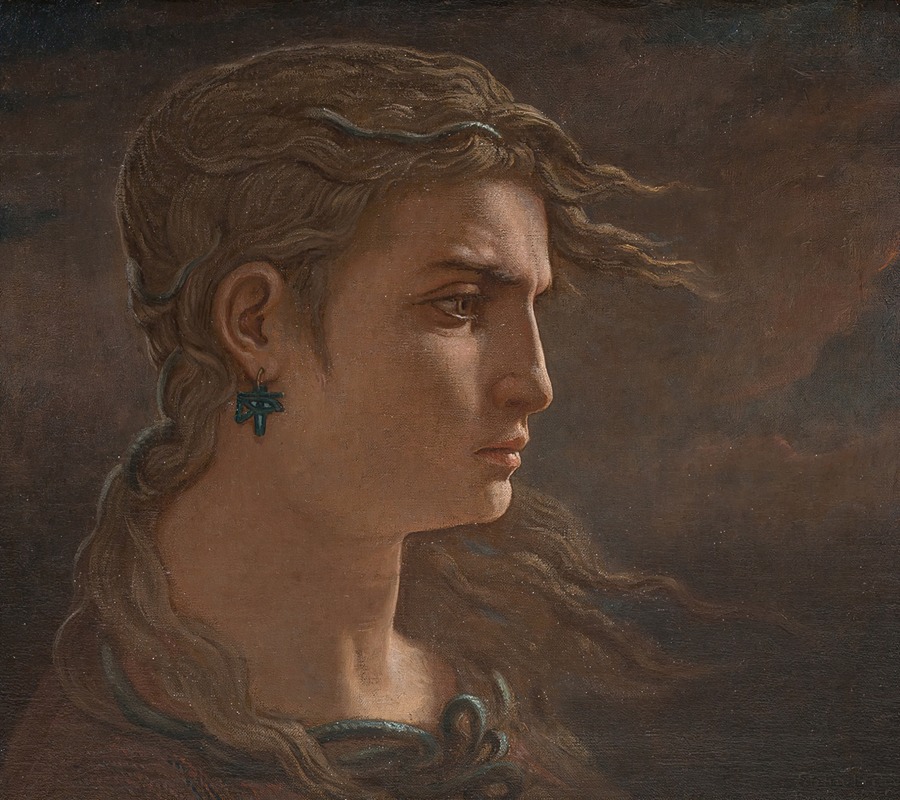
Head of Medusa
A hand-painted replica of Elihu Vedder’s masterpiece Head of Medusa, meticulously crafted by professional artists to capture the true essence of the original. Each piece is created with museum-quality canvas and rare mineral pigments, carefully painted by experienced artists with delicate brushstrokes and rich, layered colors to perfectly recreate the texture of the original artwork. Unlike machine-printed reproductions, this hand-painted version brings the painting to life, infused with the artist’s emotions and skill in every stroke. Whether for personal collection or home decoration, it instantly elevates the artistic atmosphere of any space.
Head of Medusa is a painting by the American artist Elihu Vedder, created in 1892. Elihu Vedder was known for his work in the Symbolist movement, and his art often explored themes of mythology, mysticism, and the human condition. This particular painting is a striking representation of Medusa, a figure from Greek mythology.
Medusa is one of the three Gorgons in Greek mythology, and she is often depicted as a winged human female with living venomous snakes in place of hair. Unlike her sisters, Medusa was mortal. According to the myth, anyone who looked directly at her would turn to stone. Medusa's story has been a popular subject in art and literature for centuries, symbolizing various themes such as beauty, danger, and transformation.
In Vedder's Head of Medusa, the artist captures the haunting and tragic nature of Medusa's character. The painting focuses on her face, which is both beautiful and terrifying, with snakes coiling around her head. Vedder's use of color and light adds to the dramatic effect, emphasizing the contrast between Medusa's alluring features and the horror of her snake-infested hair.
Vedder's interpretation of Medusa is notable for its psychological depth. Rather than simply portraying her as a monster, he imbues her with a sense of sorrow and complexity. This approach reflects the Symbolist movement's interest in exploring the deeper, often darker aspects of human experience and emotion.
Elihu Vedder was born in New York City in 1836 and spent much of his career in Italy, where he was influenced by the classical art and mythology that surrounded him. His work often incorporated elements of fantasy and the supernatural, and he was known for his skillful use of symbolism and allegory. Vedder's art was well-received during his lifetime, and he became a prominent figure in the American art scene.
Head of Medusa is part of the collection at the Smithsonian American Art Museum in Washington, D.C. The museum's collection includes a wide range of American art from the colonial period to the present, and Vedder's work is an important part of this collection. The painting is an excellent example of Vedder's ability to blend classical themes with his own unique artistic vision.
In summary, Head of Medusa by Elihu Vedder is a powerful and evocative painting that captures the complex nature of its mythological subject. Vedder's skillful use of symbolism and his deep understanding of human emotion make this work a significant contribution to the Symbolist movement and to American art as a whole.


















